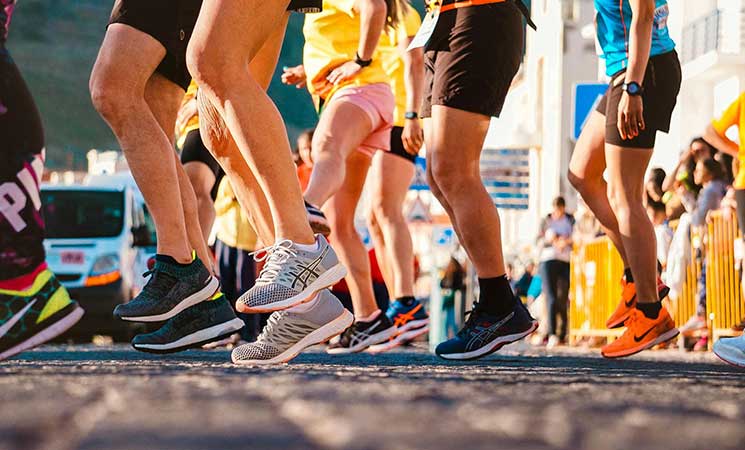For your comfort and health, keep your sporting goods odor-free and clean, whether you are an outdoor enthusiast or athlete. You must understand the importance of keeping their gear clean and odor-free.
Odor and bacteria growth in sports gear, particularly in boots and gloves, are common and can lead to health risks. Understanding the causes and implementing effective maintenance routines is crucial for both performance and hygiene.
Causes of Odor and Bacteria Growth in Sports Gear
A 2023 study published in Frontiers in Microbiology examined the microbial communities on sports equipment. Further, it was discovered that pathogens of opportunistic human origin, such as Enterobacter, Rickettsia, and Staphylococcus, were more prevalent there.
Sports equipment frequently turns into a haven for bacteria and odor because of several reasons:
- Sweat and moisture: Sweat from physical activity can soak through your gear. Bacteria thrive in the warm, moist environment found inside boots and gloves. According to Alpine Dryers, drying these items regularly can reduce the odor and keep them hygienic.
- Lack of airflow: A lot of sports equipment, especially synthetic items, do not allow for enough airflow, which traps moisture and bacteria.
- Extended use: Sweat and grime build up when the same equipment is used over and over again without being cleaned and dried.
- Material composition: Certain plastics and neoprene used in sports equipment have a higher propensity to retain moisture and mold growth.
Health Risks Associated with Bacteria and Odor
More than just a bother, the lingering smells and fungi in sports equipment can be harmful to your health.
Skin Infections
Sports equipment can become a breeding ground for bacteria and fungi because these microorganisms prefer moist environments. According to a report by the US Department of Health, skin infections result in serious illness. The condition accounts for as much as 10% of time-lost injuries in certain sports.
When bacteria grow on surfaces, like gloves, and come into prolonged contact with the skin, they can cause bacterial dermatitis. It is characterized by redness, itching, and occasionally oozing lesions.
The warm, moist environments found inside shoes and boots are ideal for the fungus that causes athlete’s foot. According to a 2023 study, up to 43% of athletes experience this illness. Another fungal infection called ringworm can be transferred by direct contact with contaminated equipment. Gradually, it results in itchy, circular skin rashes.
Cuts, abrasions, or even minor skin irritations can compromise the integrity of the skin and provide entry points for bacteria. This results in more serious systemic infections. Untreated infections can occasionally spread throughout the bloodstream, endangering general health.
Respiratory Issues
Breathing in airborne pollutants, such as mold and bacteria, from sports equipment can aggravate the respiratory system and cause irritations. As per a 2024 study, among athletes, those in collision or contact sports, the occurrence of Staphylococcus aureus varies widely. It ranges from 22.4% to 68.6%. Of these cases, up to 34.9% involve methicillin-resistant Staphylococcus aureus (MRSA) strains.
The American Lung Association states that people who already have respiratory disorders like allergies or asthma are especially vulnerable. They are more likely to experience worsened respiratory issues due to exposure to airborne fungi.
Tips to Keep Sports Gear Hygienic
Sports equipment needs to be cleaned and dried properly regularly to prevent bacteria. These are a few tactics that work:
Regular Cleaning
Sports equipment maintenance involves a proactive strategy that includes routine cleaning and appropriate drying methods. To properly eradicate bacteria, equipment must be washed right away with antibacterial detergents after every use. Periodic disinfection with sprays or wipes designed for sporting goods can further reduce bacteria and odor for a deeper clean.
Proper Drying Techniques
Use specialized drying equipment with suitable boot dryer accessories. This will ensure thorough drying of your gear, restricting the moisture buildup that bacteria thrive on. These dryers circulate warm air, expedite the drying process, and inhibit bacterial growth effectively.
Adequate Ventilation
Choosing sports gear made from breathable, moisture-wicking materials also aids in reducing bacteria accumulation. Ensure adequate ventilation by allowing gear to air out after use and avoid storage in enclosed spaces to maintain cleanliness. Additionally, incorporating natural remedies like baking soda or vinegar can assist in neutralizing odors between washes.
FAQs
How often should I wash my sports gear?
Sports equipment should be washed every time it is used or at least once a week. Frequent cleaning keeps your equipment hygienic and discourages the growth of bacteria. While washing, avoid using fabric softeners, which can coat the fabric and lower its moisture-wicking abilities. Instead, consider a small amount of sports-specific laundry detergent.
Is it okay to clean sports gear with chemicals?
Not every material is resistant to powerful chemical disinfectants. To prevent damaging your equipment, always refer to the manufacturer’s instructions before considering chemical products. You can also go for natural deodorizers which are chemical-free options to eliminate odors without harmful residues.
How can I determine whether bacterial buildup requires a replacement of my sports gear?
It may be time to replace your equipment if it still smells bad even after cleaning. Bacterial buildup can be indicated by lingering smells and visible mold or mildew. Moreover, damp sports gear can harbor fungi and bacteria, multiplying and leading to athlete’s foot infections or irritations.
How long does it take a dryer to dry sports equipment all the way through?
Depending on the dryer type and the material of the equipment, drying times can change. Using a quality dryer usually takes several hours to thoroughly dry boots or gloves. Also, for optimal performance, check the dryer’s lint screen and vents to ensure they are clear of obstructions.
In the end, odor and bacterial growth reduction in sports equipment are important for both health and freshness. Putting hygiene first prolongs the life of equipment and reduces the possibility of bacterial infections. This eventually benefits performance and general health in outdoor and sports activities.












